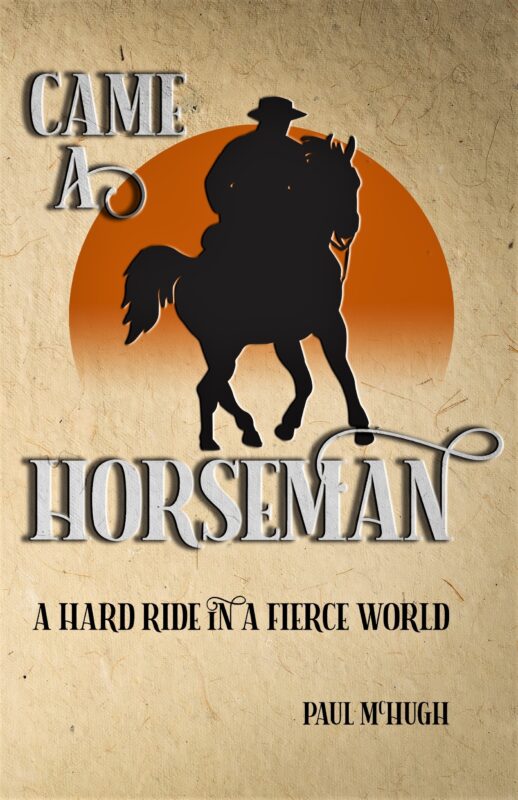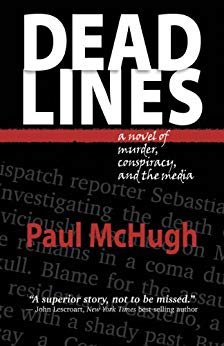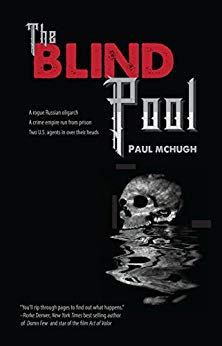Ezra Pound described copy-editing as “de-suetizing” a manuscript, i.e. pounding out the fat.

All writers have some part they loathe about their process.
I once figured the most hateful portion of the gig to be copy-editing my own work. That stayed true for years. But I finally grew able to alter my vision in a fundamental way. I went from regarding repetitive copy-edits as stultifying drudgery to seeing my polish-it-up sessions as an aspect of the craft that could be truly remarkable and exciting.
Bring Your Angel out of the Marble

Any inspiration for a story is a bright and shiny thing. Yet it still is only an idea.
That big ream of blank paper awaits you, stolid and stubborn, piled atop your desk. Much as a rough, unforgiving hulk of Carrara marble juts up from a studio floor, where it requires, oh, just a few million chops or so from a sculptor’s hammer and chisel. Slowly, steadily, the sculptor must persevere, pecking away at that big blank block until an object that resembles his dream of a celestial being starts to emerge.
Even then, he’s barely begun. The precise pose, the facial expression, the eyes, the mudras its fingers form must all be worked out and worked on. And after that, he needs to get the vanes, rachis and calamus right on every single feather of its wings before his angel looks capable of heavenly flight. Which it must, right?
Although it’s formed of solid rock.
Tech to the Rescue

A breakthrough came once I found a spot where my nausea about polishing up my own writing seemed to be rooted. Reluctance stemmed from the low-tech way I’d been forced to compose, back in the day – by which I mean, decades back. First, three or four drafts were scribbled on a legal pad, then a new draft painstakingly tapped out on a typewriter. No low amount of cursing was involved if I had to rip a sheet of paper right out of the roller to eradicate a mistake too ghastly to be whited-out. Or because I’d just dreamed up a new way to wonderfully improve a passage. Whatever my reason might be, I was next forced to type that page all over again. Sometimes, several times. A definite tooth-grinder!
I felt a gift akin to a lift in Apollo’s chariot when electronic typewriters thumped onto the scene in the early 1980’s. I bought a model that boasted a five-page internal memory, plus a small, LED read-out screen. I could edit a manuscript inside the typewriter, then just hit Print. Liberty! Victory! Dance-around-the-room glee! That development was followed in the late 80s by the dawn of PCs and Macs (though that feared Apple bomb icon, whenever it popped up, could still produce a bout of hair-tearing frustration).
The Potter’s Field

Rapid development of personal computing meant that texts soon became almost infinitely malleable. Writing began to resemble pottery more than sculpture. One could preserve early drafts and return to them to snatch out elements, cut-and-paste and shove stuff around, squish it here, poke it out over there, rip off a piece and cram it someplace else. Even create multiple versions, contrast and compare them, then stitch various body parts together like Dr. Frankenstein whistling as he whittled and whiled a day away in his gloomy lab. Malfunctioning versions could be interred beneath the cobbles in his courtyard with nary a trace, while the single most lively and presentable version stomped out the castle door to go forth and terrify the village. (By which, I mean my story getting released amongst the public somewhere.)
Once there was no longer a practical reason to fear writing in multiple drafts, I had to confront a deeper, more psychological cause of my reluctance to polish. And that was this: going over and over a manuscript forced me to confront any lack of talent I had demonstrated – leaving me eyeball to eyeball with my own monster, as it were. The confrontation made me draw a deep breath as I derived a basic truism from it: Every piece of writing can always be improved. And this axiom sports a corollary: Every piece of writing should always be improved – but only up to a point!
The Law of Diminishing Returns

And that point is when your degree of improvement becomes vanishingly small. When a diminishing return starts to rear its ugly head. Just because you made your piece fifty percent better by spending a day going over it does not mean if you burn another day on it that you’ll score one more fifty percent gain. Maybe you’ll only see five percent. Still worth it? Yes. But drop below five, and you might as well go ahead and sign off on the entire bloody damned project. It’s time to move your butt along to the next production item.
Up in California’s coastal village of Mendocino, the place I launched my writing career, I dated a beautiful painter for a few months. During that time, I watched this gal labor week after week on a painting that seemed ultimately exquisite to me. I couldn’t observe any improvement she made, not unless she pointed it out. Sometimes, her change was a single brush stroke. I finally asked, “How do you know when a painting is done?” She replied, “A painting is never finished. It is only stopped.”
Well, bingo!
My Way to a Concrete Result

Readers of my prior newsletters (specifically, #2 in this “Writin’ Life” series) may recall that in my 20s, I supported myself in the building trades. I loved to master those tough skill sets, I enjoyed the physical exertion and the camaraderie among work crews. Our most challenging task lay in the pouring of concrete. That was a good lesson in the importance of getting your basics right – fail to build strong, level, correctly angled forms, and you just end up pouring only an incredibly pricey mistake.
I reached a point where I could design and build forms, then supervise pours. I’d amuse myself by sticking a thrift-store wineglass into my work belt. When the first trickle rattled down the chute, I’d catch it in my glass, swirl it, and hold it up to the light. (A pour foreman must test “mud” to be sure it’s got the correct amount of water in it for the type of pour, as well as the day’s conditions.) Since our cement-truck driver was always different, I always won at least a chuckle with my crumby little stunt.
Each day’s temperature and humidity had a role in how any given pour played out. Sometimes the relevant chores would last much longer than it seemed they ought to.
For a foundation pour, our forms would be vibrated by beating a hammer on the sides, then leveled off by “screeding” it with a 2×4. For a slab, you’d level it with a longer board. Next came an effort to sink rocks and bring grey liquid up to the surface by running a curved wooden trowel on a pole (a “float”) over it repeatedly. As the concrete set, a good mud-man would deploy a steadily lengthening array of trowels to polish its surface.
Make Your Trowel Sing

If I supervised, I had to stay on the job until all troweling was done. Often that was not until well after the rest of our crew had left for home. The pair of us kept at it, him down on his rubber knee pads, scraping a trowel back and forth over the surface as the mud slowly hardened to stone, and me toting over various implements upon demand, as if I were a mere tool caddy. We were long beyond a point where he had any interest in either my direction or advice. Finishing the job now relied solely on his expertise.
And the steel of his final, polishing trowel would ring, ring, and sing out into the looming darkness with every stroke of his arm.
Then he’d arise, come to the side, yank off his gloves and pads. We’d drink from the six-pack I’d bought to celebrate the birth of a brand-new slab, one as solid and level as a championship billiard table, one that boasted a surface as slick and gleaming as a pane of grey glass.
That is what I aspire to in my prose. A substrate that firmly supports my story, and a surface that allows a reader to glide across it without impediment.
And these days I’ve found that it’s a pleasure to try to create a work with precisely that sort of finish. To work on the pores and feathers of the angel, well after its shape has been established. Educational, too. Because with each tiny improvement, I learn what made the glitch, as well as its remedy. And that flows on into further efforts. You see, every piece of writing, whether published or not, is simply more training for your next piece.
Love every aspect of the craft, and you’ll win a fighting chance to improve it.
The Prose Trowel

To improve my polishing work, I’ve designed a writers’ trowel. Basically, it’s a piece of cardboard wrapped in gaffer’s tape. Instead of a handle, in its center, there’s a slot. When I slide it slowly down a page of a print-out, I’m able to only read what appears in the slot. That makes me read what’s truly present on the page, not what I think or wish or imagine might be there. One doesn’t copy-edit a writer’s intent, after all. You can only copy-edit the hard results.








